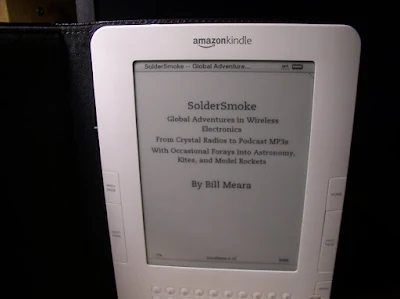 When I started receiving packets via the International Space Station earlier this month, I noticed a familiar call: KB1GVR. He was one of the few North American stations who could pick up my packet beacons via PCSAT -- he would then relay them to the internet. This month, when I sent my sigs through the ISS, OM GVR spotted them, and sent reply messages to me via the packet system. I didn't get them via the satellite -- they came to me via the "Stations Heard Via ISS" web site. But still, it was fun to run into an old friend via the space station.
When I started receiving packets via the International Space Station earlier this month, I noticed a familiar call: KB1GVR. He was one of the few North American stations who could pick up my packet beacons via PCSAT -- he would then relay them to the internet. This month, when I sent my sigs through the ISS, OM GVR spotted them, and sent reply messages to me via the packet system. I didn't get them via the satellite -- they came to me via the "Stations Heard Via ISS" web site. But still, it was fun to run into an old friend via the space station.
Re: How I Evaluate a Flea Market!
-
W2ILA said:
Quote
The best part of the fests is the people. Standing around talking nonsence
with people you havn’t seen in months or years trips my trigge...
2 hours ago






































